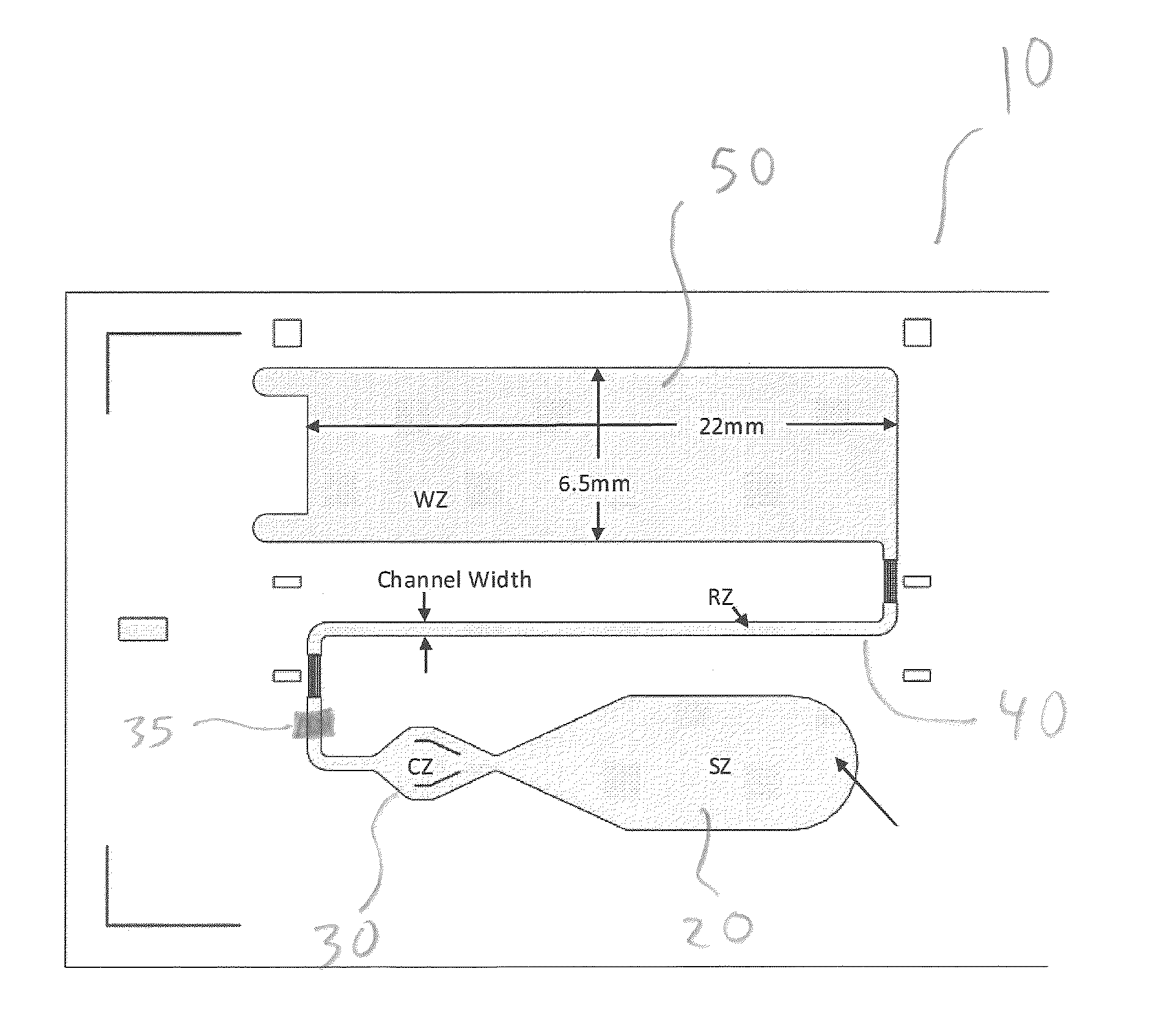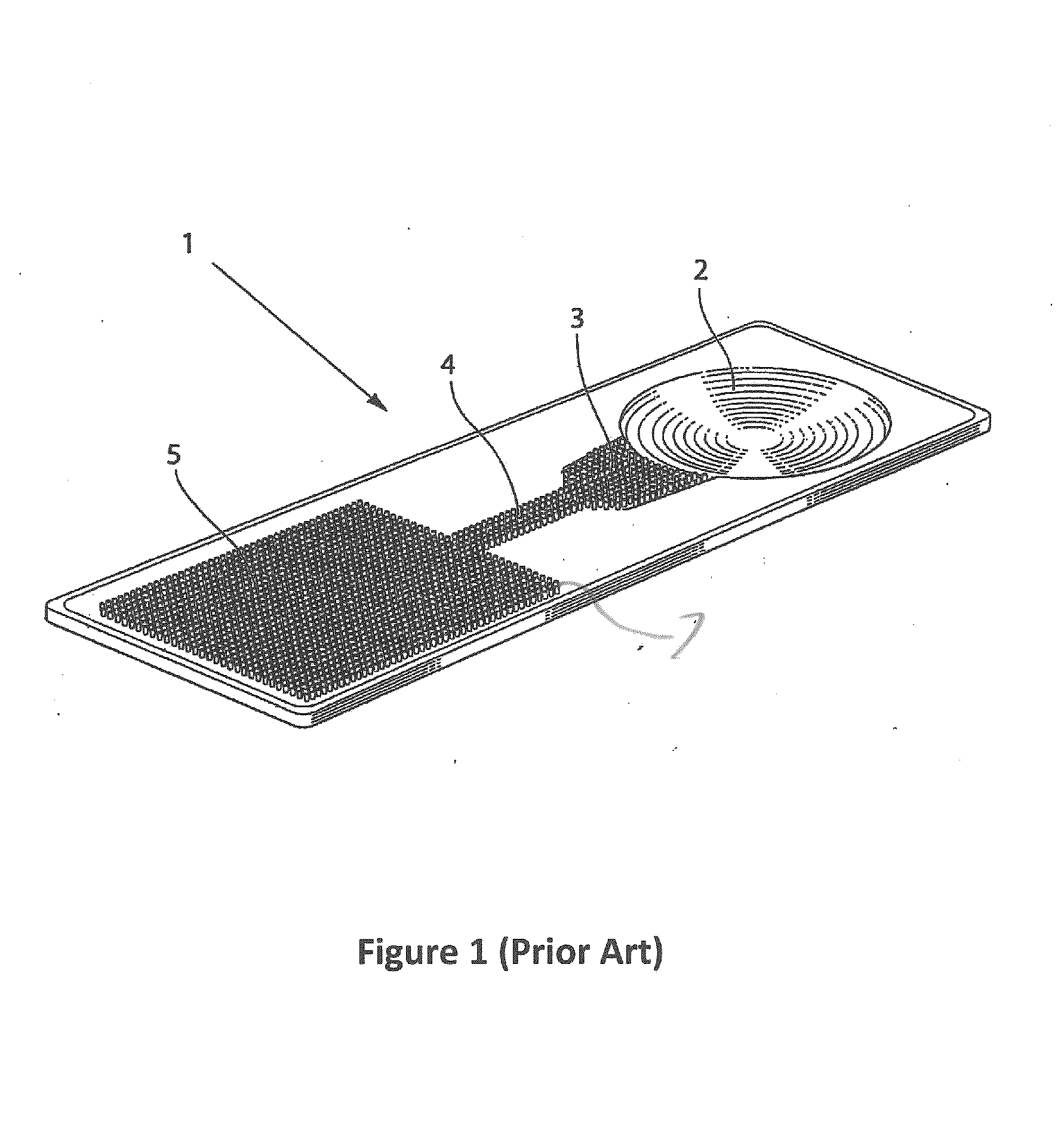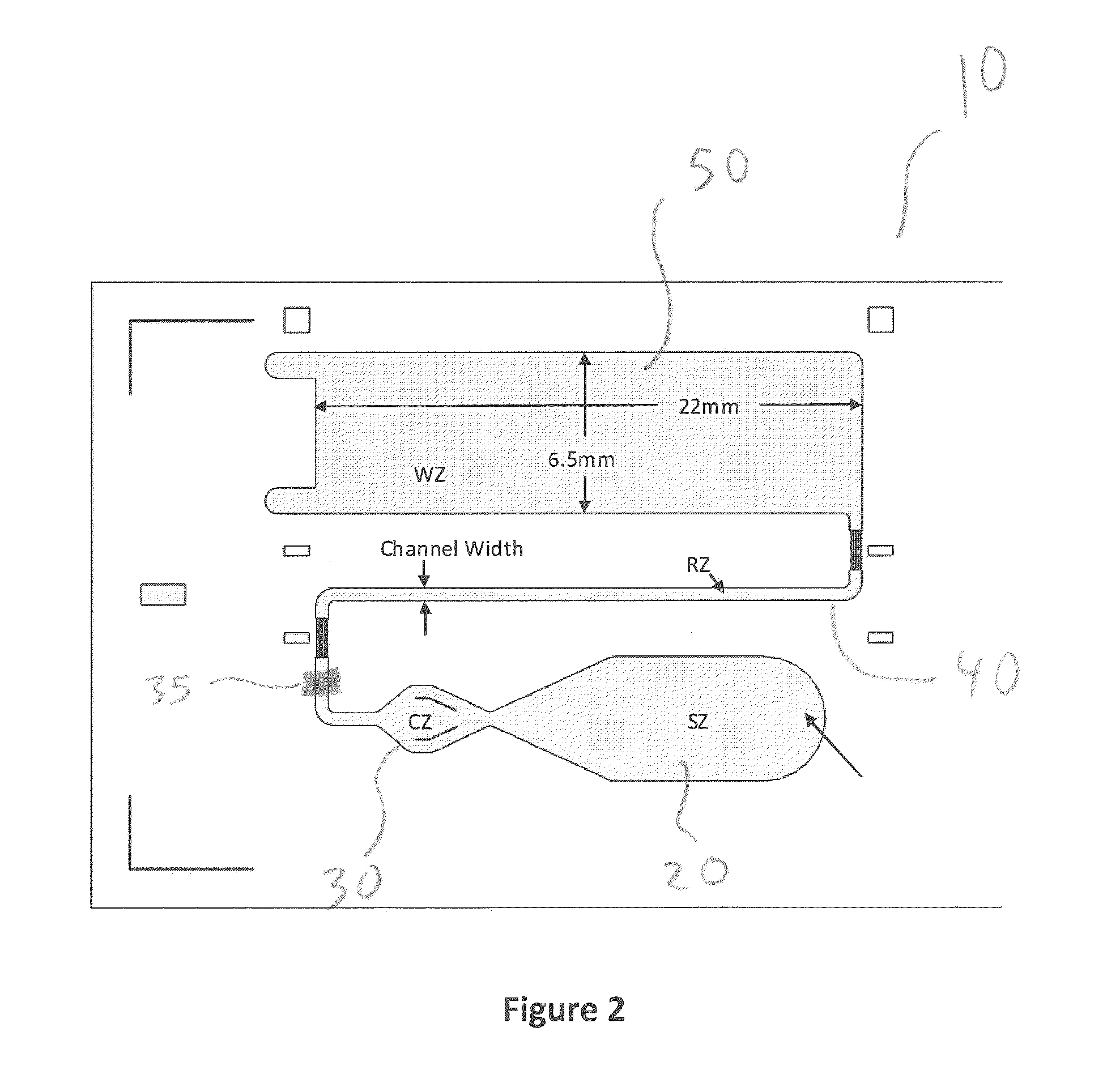Controlling Fluid Flow Through An Assay Device
a technology of fluid flow and assay device, which is applied in the field of diagnostic assays, can solve the problems of difficult to meet all these requirements in one and the same assay, and many assays are limited by the speed, sample size and dimension of the device, so as to reduce the pressure gradient
- Summary
- Abstract
- Description
- Claims
- Application Information
AI Technical Summary
Benefits of technology
Problems solved by technology
Method used
Image
Examples
examples
[0081]Plastic substrate chips made of Zeonor (Zeon, Japan) having oxidized dextran on the surface for covalently immobilization of proteins via Schiff base coupling were used. Fluorescently labeled Anti-NT-proBNP monoclonal antibody was deposited and dried to create a reagent zone. Anti-NT-proBNP monoclonal antibody was deposited and dried to create a detection zone. A small amount of Triton X-45 was deposited on the device to increase wettability of the sample for better capillary flow. Sample was added to the sample zone of the device and the capillary action of the micropillar array distributed the sample through the flow channel into the wicking zone. A typical assay time was about 10 minutes. The signal intensities from the fluorescently labeled complexes in the detection zone were recorded in a prototype line-illuminating fluorescence scanner. The results are shown in FIG. 8 described below.
[0082]An assay device having wicking zone dimensions of (R2.04) 10 mm×10 mm and an assa...
PUM
| Property | Measurement | Unit |
|---|---|---|
| total area | aaaaa | aaaaa |
| diameter | aaaaa | aaaaa |
| diameter | aaaaa | aaaaa |
Abstract
Description
Claims
Application Information
 Login to View More
Login to View More - R&D
- Intellectual Property
- Life Sciences
- Materials
- Tech Scout
- Unparalleled Data Quality
- Higher Quality Content
- 60% Fewer Hallucinations
Browse by: Latest US Patents, China's latest patents, Technical Efficacy Thesaurus, Application Domain, Technology Topic, Popular Technical Reports.
© 2025 PatSnap. All rights reserved.Legal|Privacy policy|Modern Slavery Act Transparency Statement|Sitemap|About US| Contact US: help@patsnap.com



